¶ Introduction
An elevator (or stabilator, which we discuss later in this article) is one of the three primary flight control surfaces. It is required to control aircraft safely during the flight. Movement of any of those primary controls changes the airflow and pressure distribution over and around the airfoil. These changes affect the lift and drag produced by the airfoil/control surface combination, and allow a pilot to control the aircraft about its three axes of rotation.
¶ Types of control surfaces
¶ Elevator
The elevator controls movement about the lateral axis. This movement is referred to as "pitch".
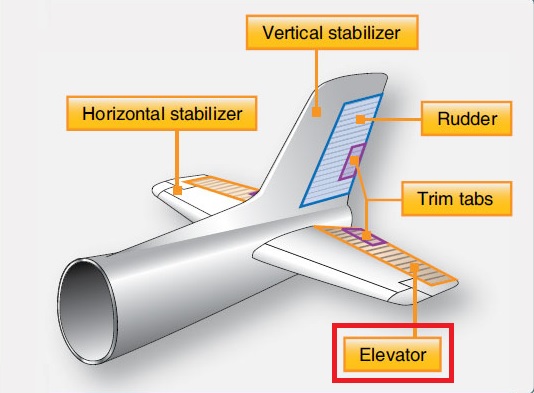
The elevators respond to a forward or aft movement of the control column or control stick. When the pilot moves the controls forward, the elevator surface is deflected downwards. This increases the camber of the horizontal stabilizer resulting in an increase in lift. The additional lift on the tail surface causes rotation around the lateral axis of the aircraft and results in a nose down change in aircraft attitude. The opposite occurs with an aft movement of the flight deck controls.
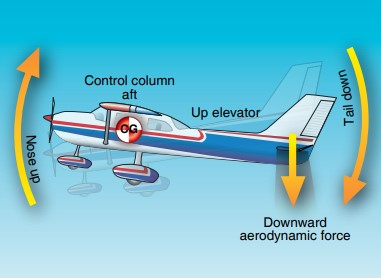
¶ T-tail
T-tail designs have become popular on many light and large aircraft, especially those with aft fuselage mounted engines. It has some benefits over the traditional configuration.
- In a T-tail configuration, the elevator is above most of the effects of downwash from the propeller
- T-tail configuration removes the tail from the exhaust blast of the engines
- It reduces noise and vibration inside the aircraft
- Seaplanes and amphibians often have T-tails in order to keep the horizontal surfaces as far from water as possible.
On the other hand T-tail configuration has a significant disadvantage: aircraft may be more susceptible to a deep stall, especially when flying at a very high AOA (Angle of Attack) with a low airspeed and an aft CG (Centre of Gravity).
In this condition, the wake of the wing impinges on the tail surface and renders it almost ineffective.
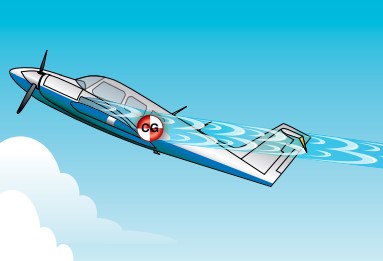
¶ Stabilator
Stabilator is essentially a one-piece horizontal stabilizer that pivots from a central hinge point.
Because stabilators pivot around a central hinge point, they are extremely sensitive to control inputs and aerodynamic loads. To decrease sensitivity, a special kind of tabs are incorporated on the trailing edge of the stabilator. These are called antiservo tabs. A good example of an aircraft with stabilator is the Piper 28 Cherokee, family of popular light aircraft used for training, air taxi and private use.
Stabilator construction is simple compared to the stabilizer + elevator, having practically only a plate, and having no control linkages inside. This makes it lighter and produces less drag.
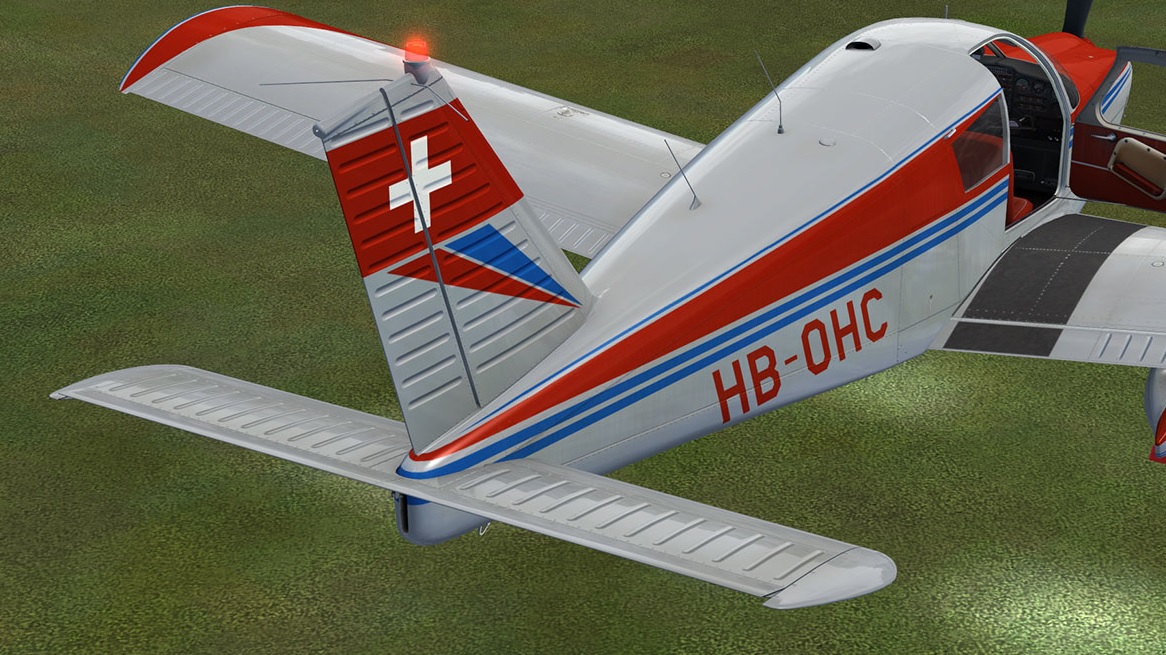
¶ Trimmable horizonal stabilizer (THS)
Most airliners and transport aircraft are equipped with adjustable horizontal stabilizers which are combined with independently-moving elevators. The elevators are controlled by the pilot or autopilot and primarily serve to change the aircraft's attitude, while the whole assembly is used to trim and stabilize the aircraft in the pitch axis.
The main advantage of THS is smaller elevator deflection angles. When high-lift devices are deployed (flaps for example), the center of pressure on the wing shifts backwards. The result is a massive change in trim, and by adjusting the stabilizer incidence, the elevator can be held near its neutral position and has reserves for control.
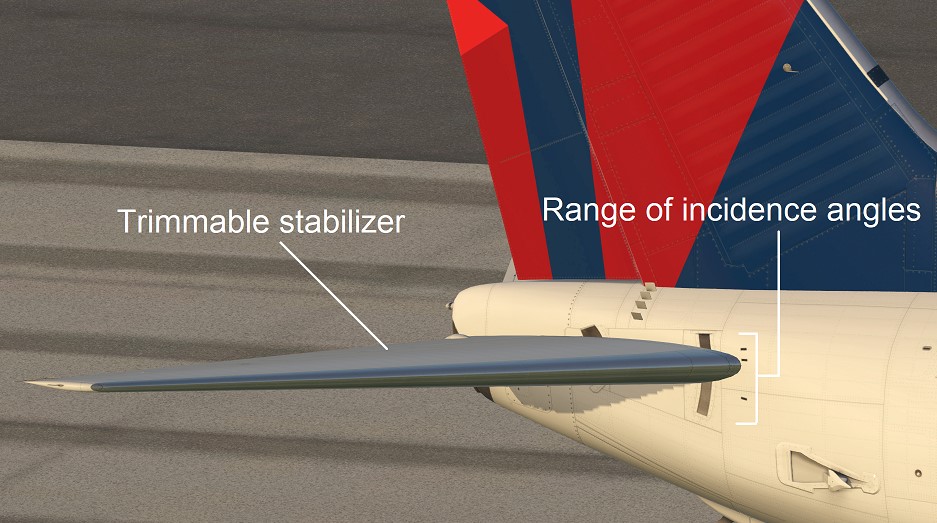
- Pilot's Handbook of Aeronautical Knowledge by FAA - Chapter 6 Flight controls
- SKYbrary library - Elevator
- VID 531824 - Creation
- VID 496402 - Wiki.js integration